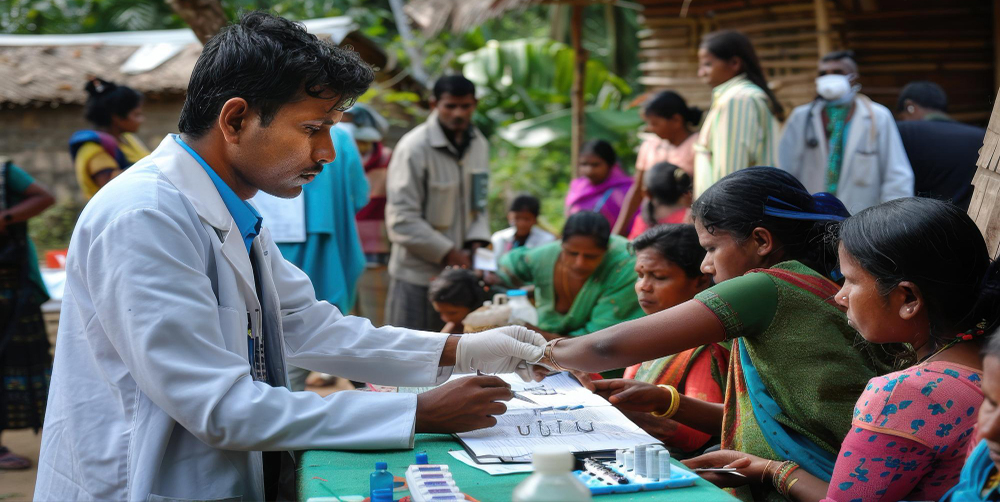Table of Contents
In recent years, the healthcare sector in Pakistan has been evolving significantly, driven by technological advancements and the increasing demand for accessible, affordable medical services. One key player in this transformation is telehealth, which has emerged as a powerful tool for overcoming barriers in the traditional healthcare system. In this blog, we will explore the role of telehealth in reshaping Pakistan’s healthcare infrastructure and its impact on the population’s well-being.
The Current Healthcare Landscape in Pakistan
Pakistan’s healthcare system faces several challenges that impact its effectiveness in serving the population. Some of these challenges include:
- Limited access to healthcare: A large portion of Pakistan’s population, especially in rural areas, lacks access to quality healthcare facilities. With more than 60% of the population living in rural areas, many people must travel long distances to receive basic medical care.
- Shortage of healthcare professionals: Pakistan faces a significant shortage of doctors, nurses, and specialists. According to the Pakistan Medical Association (PMA), there is one doctor for every 1,200 people, and one nurse for every 2,500 people. This shortage leads to long waiting times and suboptimal care, particularly in underserved regions.
- Overburdened urban healthcare facilities: Major cities like Karachi, Lahore, and Islamabad have seen exponential growth in population, further straining the already overburdened healthcare infrastructure. Public hospitals are overcrowded, and the ratio of patients to healthcare providers remains imbalanced.
- Lack of medical technology and resources: Rural clinics and even some urban hospitals are underfunded and lack essential medical equipment and diagnostic tools, hindering timely diagnosis and treatment.
The Rise of Telehealth in Pakistan
Telehealth, the delivery of healthcare services using digital platforms such as video consultations, mobile health applications, and remote monitoring devices, has emerged as a solution to many of Pakistan’s healthcare challenges. With the increasing penetration of smartphones and internet access across the country, telehealth has grown in popularity. This technological advancement holds immense potential to bridge the gap between healthcare providers and patients, especially in remote and underserved areas.
Key Benefits of Telehealth in Pakistan
- Improved Access to Healthcare Telehealth has made healthcare more accessible for people in rural and remote regions. Instead of traveling to urban centers, patients can now consult with doctors virtually from the comfort of their homes. This reduces the cost and time associated with healthcare visits and ensures that even those in the most isolated areas can receive expert medical advice.
- Reduction of Urban Overcrowding By decentralizing healthcare through telemedicine platforms, patients in urban areas can also benefit. Instead of flocking to already crowded hospitals, they can seek medical assistance through video calls and online consultations, alleviating the pressure on hospitals and clinics.
- Cost Efficiency Telehealth cuts down costs both for patients and healthcare providers. Patients no longer have to spend money on transportation and accommodation for traveling to urban hospitals. Healthcare facilities can use telehealth to provide services without building additional physical infrastructure, making healthcare delivery more efficient and cost-effective.
- Chronic Disease Management Remote monitoring tools provided through telehealth platforms allow patients with chronic diseases such as diabetes, hypertension, or heart conditions to manage their health more effectively. Healthcare providers can monitor patients’ vitals in real-time and offer timely advice, reducing the likelihood of hospitalizations.
- Bridging the Doctor-Patient Gap The shortage of doctors in Pakistan has led to an imbalance in the doctor-patient ratio. Telehealth helps to mitigate this issue by connecting patients with specialists from across the country. Patients no longer need to wait weeks for an appointment with a specialist—they can consult doctors online and receive prompt advice.
Government Initiatives and Private Sector Innovations
Pakistan’s government and private sector are playing a crucial role in promoting telehealth services. Several telemedicine platforms have emerged in recent years, offering a wide range of healthcare services via online consultations. Some noteworthy platforms include:
- EZShifa: A telehealth platform providing access to doctors, specialists, and diagnostic services via online consultations, offering telemedicine in over 200 locations across Pakistan.
- Sehat Kahani: A popular telemedicine platform that connects female doctors with patients, particularly in rural and underprivileged areas. Sehat Kahani has been instrumental in empowering female healthcare providers who might not be able to work in traditional settings.
- Oladoc: This platform allows users to book appointments with doctors, consult via video calls, and get e-prescriptions online. Oladoc also provides information about doctors' qualifications and reviews to help patients make informed decisions.
The government of Pakistan has also shown a commitment to integrating telehealth into the national healthcare system. During the COVID-19 pandemic, the government encouraged the use of telemedicine to reduce the load on hospitals and limit the spread of the virus. This crisis highlighted the importance of telehealth and opened the door for its wider adoption.
Challenges to Telehealth Adoption
Despite the many benefits of telehealth, there are several challenges that need to be addressed for it to reach its full potential in Pakistan:
- Digital Divide: While internet penetration is growing, there is still a significant digital divide in Pakistan, particularly in rural areas where internet access can be unreliable or non-existent.
- Regulatory Hurdles: The telehealth sector in Pakistan requires a clear regulatory framework to ensure the safety and privacy of patients. Laws regarding telemedicine, data protection, and the legal status of e-prescriptions need to be further developed and enforced.
- Technological Literacy: Many people, particularly older adults and those in rural areas, may not be familiar with using digital platforms for healthcare. Efforts need to be made to improve technological literacy and build trust in telehealth services.
The Road Ahead
Telehealth is poised to revolutionize healthcare delivery in Pakistan. With the government’s support and continued investment from the private sector, telehealth has the potential to address critical gaps in Pakistan’s healthcare infrastructure, making quality healthcare accessible to all citizens.
As internet access continues to expand and technological literacy improves, telehealth will become an even more integral part of Pakistan’s healthcare system. By leveraging the power of telemedicine, Pakistan can move closer to achieving universal healthcare coverage and improving the overall health outcomes of its population.
Conclusion
Telehealth is more than just a trend—it’s a necessity for a country like Pakistan, where healthcare disparities are stark and the demand for medical services is high. With the right investments in technology, infrastructure, and regulation, telehealth can provide the solution to Pakistan’s long-standing healthcare challenges, ensuring that everyone, regardless of location, can access the care they need.
No Comments Yet
Be the first to share your thoughts about this post!



Comments (0)